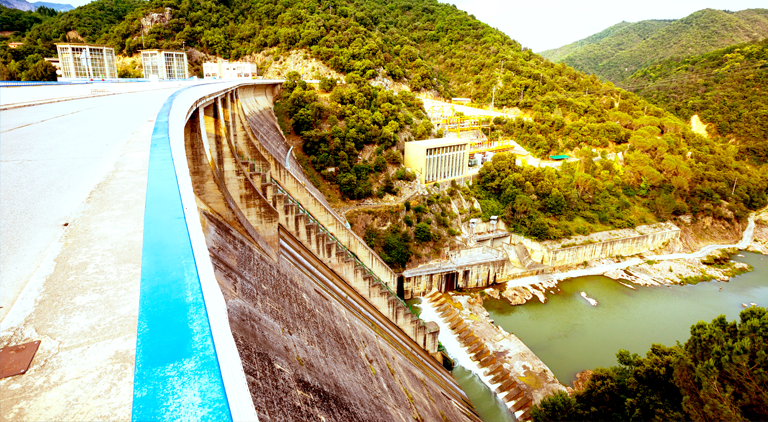Policy amendments and North Eastern states: Seeding India’s hydro hope plants
By EPR Magazine Editorial September 9, 2019 12:07 pm IST
By EPR Magazine Editorial September 9, 2019 12:07 pm IST

Hydro, once touted as the sustainable, renewable alternative to coal has slowly faded from the discourse. The industry experts discuss the state of hydro in our country.
Hydropower is now recognised as a renewable source of power and is part of the 175 GW target set for 2022. Of the total 175 GW, small hydropower projects contribute 5 GW. In India, with an installed base of approximately 46 GW, and another 4.5 GW from SHP, it is well poised to grow further. India’s ambitious renewable energy capacity addition is more or less on track and with a behemoth of RE capacity addition through grid connectivity that would require hydropower as a way to keep grid stability in the coming years.
The current state of small hydro projects
Small projects i.e. those upto 25 MW comes under the MNRE, while large projects will be under the Ministry of Power. India’s small hydro potential is 21,133 MW, of which only 4,593 MW has been installed until 31 March 2019. The estimated potential for power generation in the country from small hydropower plants is about 20,000 MW, mostly in the Himalayan States as river-based projects and in other states on irrigation canals. Ashwin G Patil, Head-hydros, Tata Power Ltd. says, “The government’s decision to consider small and large hydro projects as renewable could see new investments coming to this sector.” Neelav Samrat De says, “We are expecting projects in North Eastern states to be given due attention owing to geopolitical reasons. The total small hydro project sites identified are 1001 in number out of which 320 projects have been installed with capacity 3832 MW. From this, 1662 MW are being generated by private developers (IPPs).”
What is going wrong
Hydropower can be swiftly turned ON and OFF to meet the peak load as compared to thermal and other forms of renewable energy. Patil says, “There are a few disadvantages in terms of the time it takes to implement hydropower projects. The main challenge is the displacement of large sections of the population to accommodate hydropower projects.”
Hydropower requires higher initial investments, but also enjoys the advantages of lower operational costs and a long life span. Neelav Samrat De says, “What we did witness in the last 4-5 years was a complete sluggishness in the hydro power. The main reasons were geological surprises in on-going projects leading to inordinate delays and project cost overruns. This was coupled with no fresh financing coming into the sector and hence, certain projects were nearly declared as NPAs and creditors filed for recovery through the National Company Law Tribunal.”
Reviving the NPAsA turnaround in the near future
The government’s plan to add 45 GW of hydropower (including large ones) to the existing plan of 175 GW of RE can potentially take the overall RE capacity by 2022 to 225 GW. Patil says, “The recent development in J&K is also widely expected to open up fresh opportunities for hydropower in the state.” There is also huge potential in Arunachal Pradesh and Himachal Pradesh of around 58,000 MW. Patil adds, “The turnaround is quite possible given the policy changes that have been made recently in recognising hydropower as renewable energy on par with solar and wind.”
De says, “With the increase in RE capacity addition, we expect to see movement on hydro pumped storage schemes (PSPs). The much needed funding seems to be one of the many impedances being faced in the hydro power sector at the moment. With the recent amendments to the hydro policy, we might just have to wait till backlogs clear up and we see a slew of projects coming up for development by 2020.
The main challenge of the hydro power is the displacement of large sections of the population to accommodate hydropower projects.
Ashwin G Patil, Head-hydros, Tata Power Ltd
Geological surprises in on-going projects are leading to inordinate delays and project cost over-runs.
Neelav Samrat De
We use cookies to personalize your experience. By continuing to visit this website you agree to our Terms & Conditions, Privacy Policy and Cookie Policy.